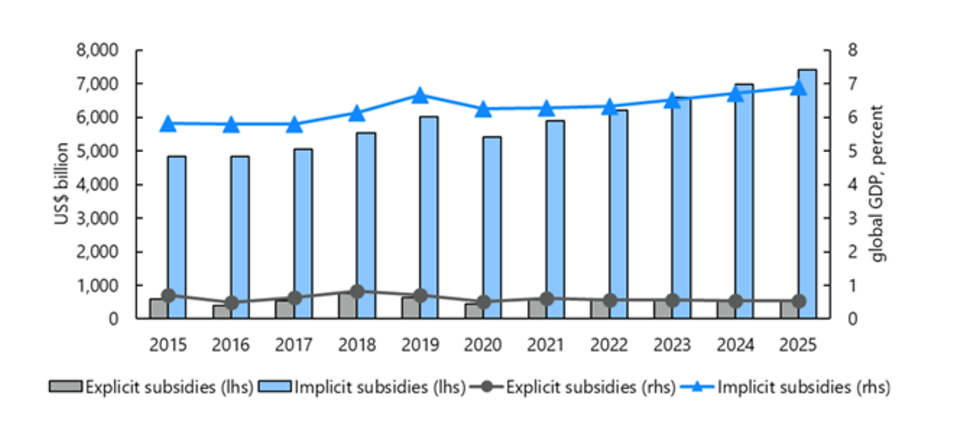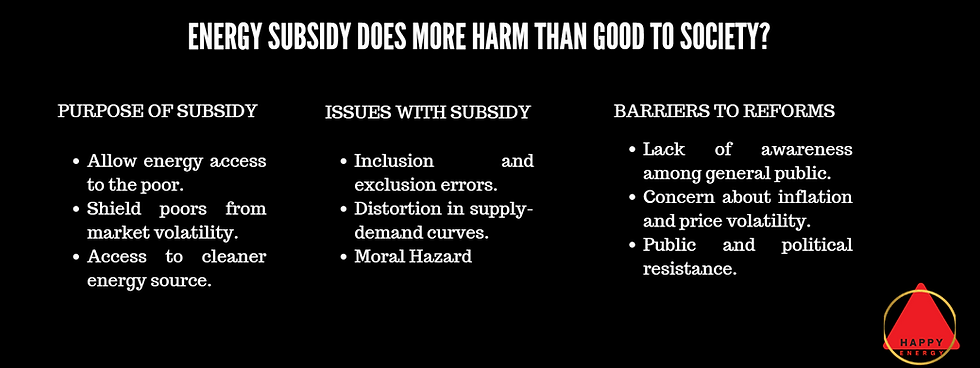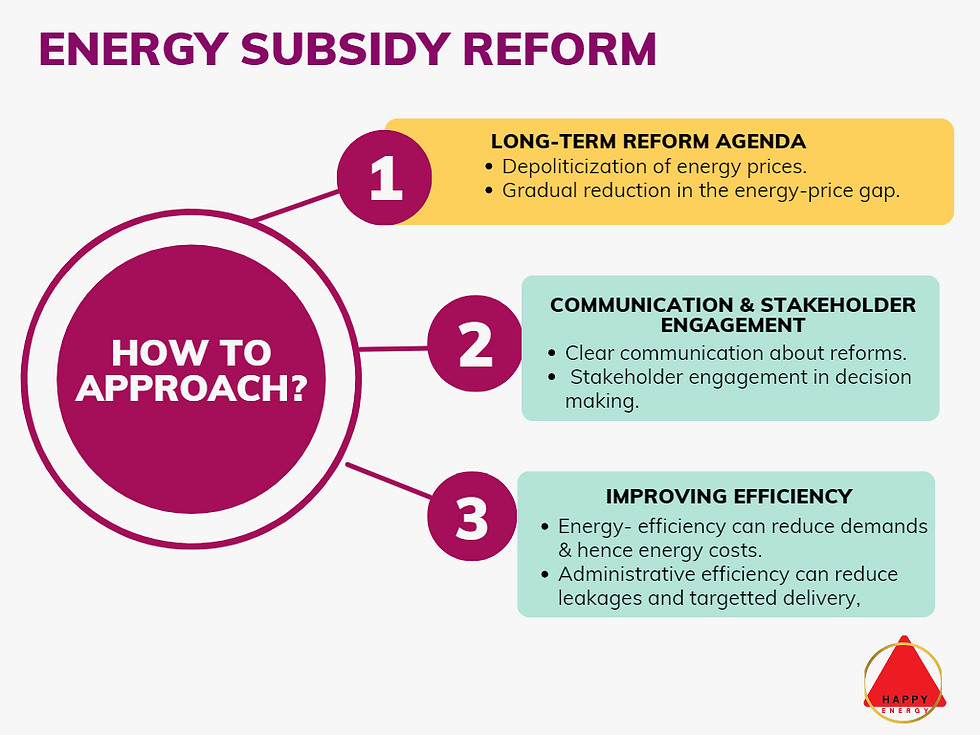Subsidy tries to keep the price of an essential commodity or service low. Low prices are generally necessary to ensure a bare minimum standard of living in a welfare state. But the subsidies come at an economic, environmental, and social cost.
Energy subsidy is a kind of financial support that tends to keep the price of fossil fuels or electricity low through a process that:
reduce the cost of the energy paid by the end-users/consumers.
reduce the cost of production or delivery of energy products.
or increase the revenue retained by the suppliers of fuels or electricity.

Purpose of Energy Subsidy:
The main intentions behind launching an energy subsidy are many, some of them are mentioned below:
The energy subsidy allows the poor to have affordable energy sources that form a substantial part of their lifestyle. For example, Kerosene is subsidized in many countries because they are a part of at least rural households where electricity has not yet reached.
Subsidies can also encourage its citizen to move to cleaner sources of energy like LPG over biomass. The move from traditional firewood for cooking has a substantial impact on rural women who don't have to be exposed to indoor air pollution and spend hours foraging in woods.
The government also wants to shield its population and manufacturing sector from the large swings experienced in the energy markets around the world. Energy forms a key input to the manufacturing sector. Micro and small-manufacturing sectors when exposed to the vagaries of the energy markets can face bankruptcy and hence the entire economic system would get affected.
What does key data suggest?
IMF on its website dedicated to fossil fuel subsidies highlights that fossil fuel subsidies were approximately 6.8% of the global GDP and are projected to increase to more than 7.5% of the global GDP by 2025.

Issues related to energy-subsidies
Although energy subsidies are initiated to be a part of the welfare schemes and are supposed to be beneficial to society as a whole, it comes with the following broader limitations:
A large share of the subsidies doesn't necessarily reach the targetted beneficiaries. Every subsidy scheme is exposed to inclusion and exclusion errors in which the benefits of the scheme do not reach the target groups due to some limitations. Inclusion errors mean some non-targeted consumers are receiving the benefits of the scheme, whereas exclusion errors mean some of the deserving beneficiaries are not covered in the scheme.
Subsidies lead to distortions in the supply-demand curves of the commodity. In a perfect market, when the rates go up, consumption comes down. But as the actual cost increase is not transferred to the consumer, the consumption of the commodity is not affected. It is termed deadweight loss or efficiency loss.
It causes a moral hazard. As consumers don't pay the actual prices for the energy, they don't appreciate the actual value of the energy. The production of energy is a costly affair with unaccounted negative externalities to the environment that a consumer pays the price for.
Barriers to Energy Subsidy Reforms:
Energy subsidy reforms are necessary to save our planet and prevent any distortions to the economy. These energy subsidy reforms are subjected to numerous barriers that hinder into target delivery of the benefits or the complete elimination of the subsidy schemes. Some of these barriers are mentioned below:
Lack of awareness among beneficiaries: Beneficiaries consider subsidies as their entitlements. They are not aware of the financial magnitude of the shortcoming and environmental implications associated with providing subsidies.
Concern about inflation and price volatility: Governments are worried about exposing their poor citizens to the vagaries of the sudden changes in the energy markets.
Public Resistance: Most democratic nations are hesitant because of the public resistance expected from this move that can provide a chance to the general public who are addicted to subsidies.

How countries can manage Energy Subsidy Reforms?
Energy subsidies are a huge loss to the government and the environment and hence the governments need to develop a strategy to reform this sector to prevent any further damage.
IMF has provided some guidelines related to how a government can approach energy subsidy management. Here are some of them listed:
Long-term reform agenda: Reform related to the energy subsidy is not just a reform that targets the reforms of the subsidy. It is a reform that covers multiple diverse sectors and involves multiple steps:
Depoliticization of energy prices. An independent agency to set up the energy prices can decouple the election cycles from the price of energy products.
The energy subsidy is a long-term planning process that involves a gradual reduction in the energy price gap so that the burden does reach the shoulders of the poor people all of a sudden which can irk the majority.
2. Communication and stakeholder engagement: Clear communication and stakeholder engagement can build trust.
Clear communication can make the general public aware of the implications of the subsidy and help generate support for the reform process.
Stakeholder engagement provides a forum where both the decision-makers and affected beneficiaries sit together and plan a way forward.
3. Improving efficiency: Improving both energy efficiency and administrative efficiency can reduce the financial burden on both the government and beneficiaries.
Achieving energy efficiency goals can lead to reducing demands and hence reduced burden of bills both to the government and the general public,
Improving administrative efficiency can lead to tapping the leakages in the pipeline and target delivery of benefits to the needy.

The above blog is written by Pankaj Prasad. Contact the author here.


Comments